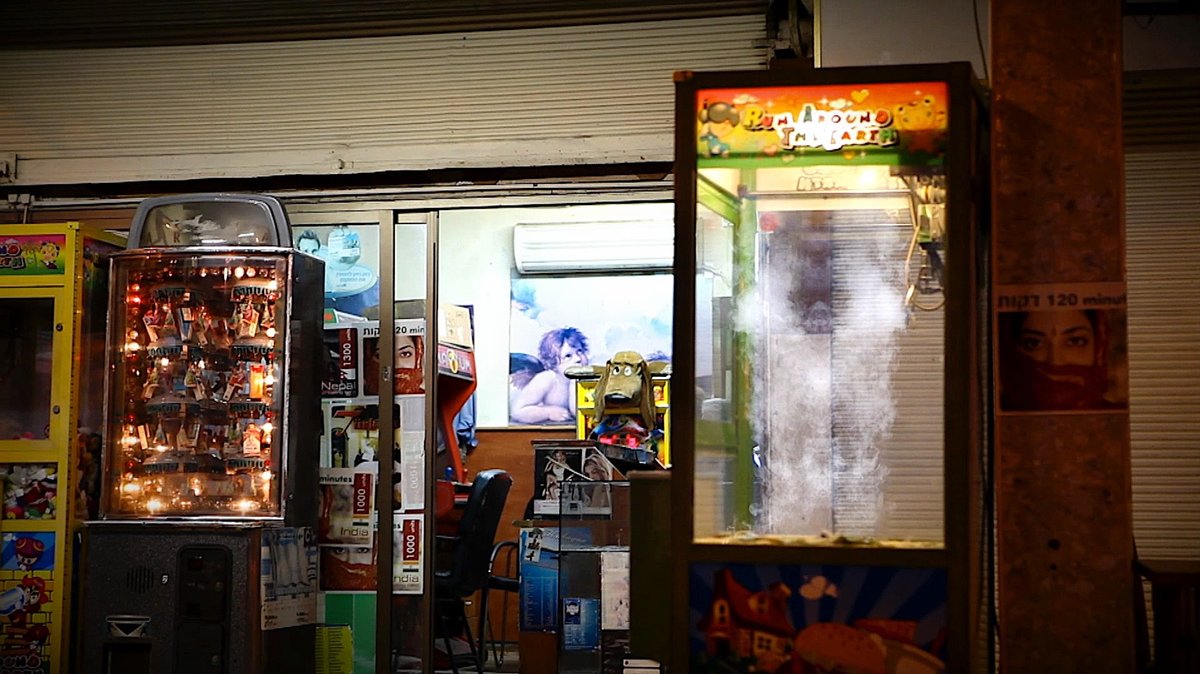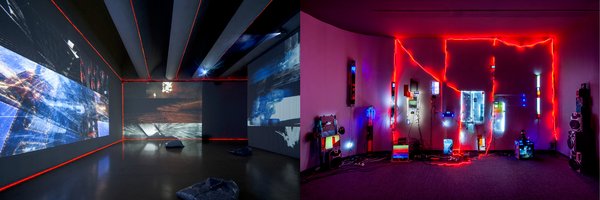Smoke and Mirrors by Ran Slavin
Single or three-channel HD video, 03:54 min, 2012

Ran Slavin, Smoke and Mirrors, 2012, still from three-channel HD video, 3:54 min.
Borrowing its title from vaudevillian magic shows, Ran Slavin’s three-channel video Smoke and Mirrors presents a series of uncanny events taking place over a nocturnal backdrop: a gas station bustles with steam, a car roof is set on fire, mirrored smoke patterns appear and disappear under a bridge and in an old-school arcade. Captivating yet perplexing, this sequence of urban scenes invites us to consider the precarity of our concept of reality.
The slang term, ‘Smoke and Mirrors,’ is commonly used as a metaphor for a fraudulent, deceptive, or insubstantial practice. It is based on magical illusions, where magicians make objects materialize or vanish by extending or retracting mirrors amid a confusing burst of smoke. Extended into the field of computer programming, the term is used to describe a program or functionality that does not yet exist, but appears as though it does (vaporware).
As such, it speaks to types of presentation whereby the audience is intended to be deceived. Read in the context of contemporary living, the film elicits new questions about the perception of our reality.
ARTIST BIO
Filmmaker, video artist, visual designer and sound composer, Ran Slavin’s work is centered on electronic, time-based media and the use of digital technologies. In his practice, Ran explores the relationships between abstraction, fiction, history, digital intervention, and sound. His work draws from auteur cinema, video-games, anime, electronic media, and urban electronic music, addressing themes of materiality and immateriality, consciousness, the visible and invisible.
